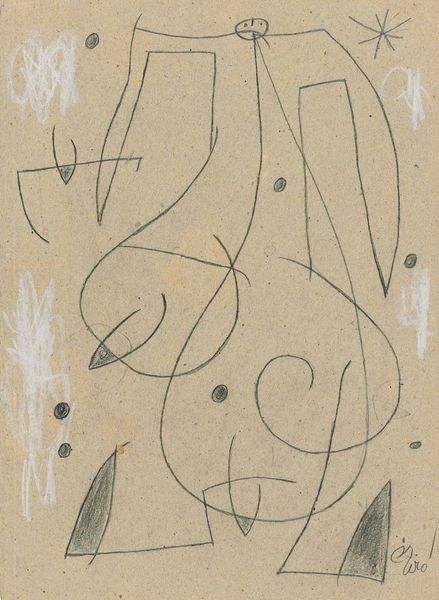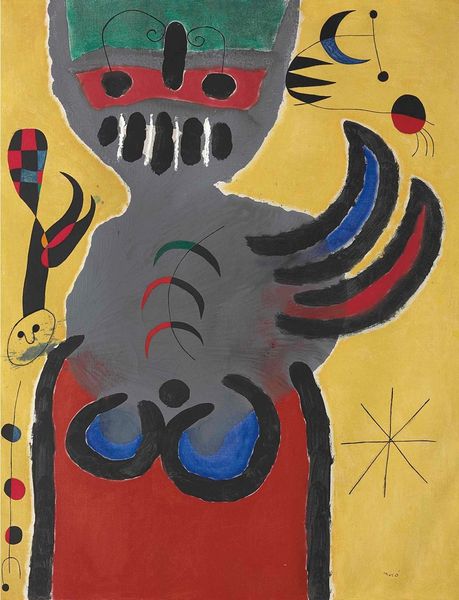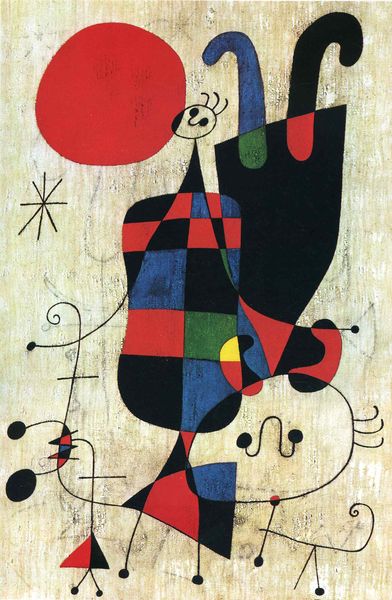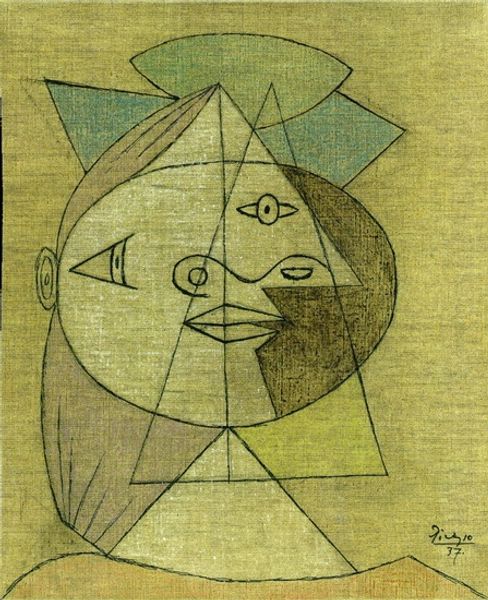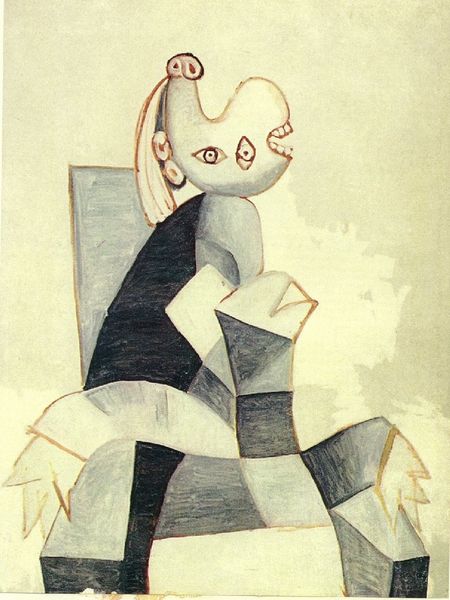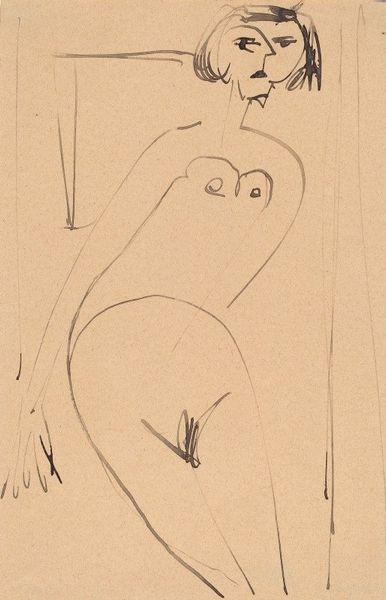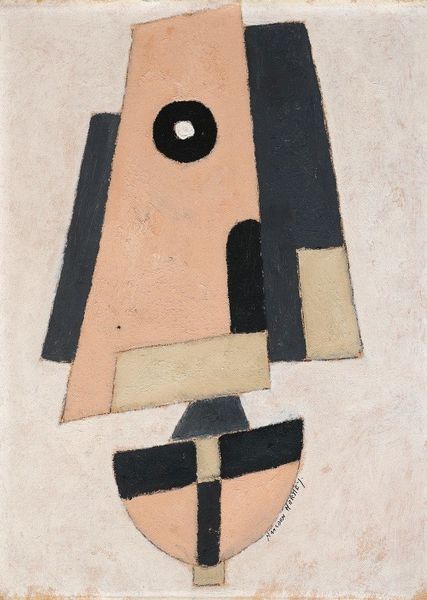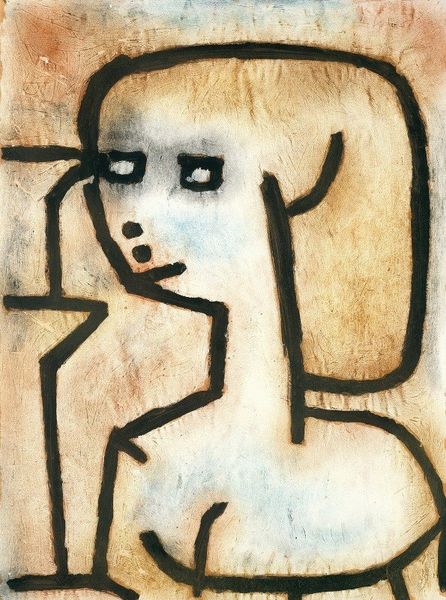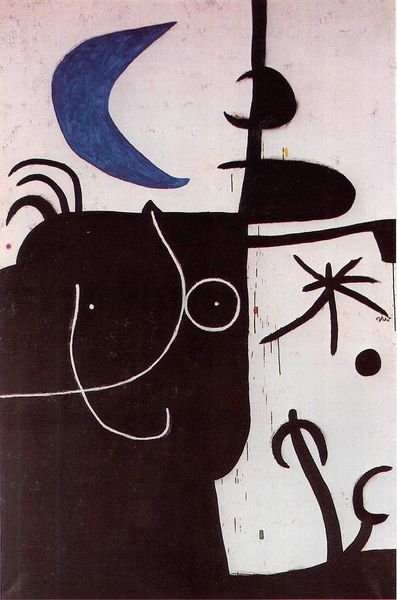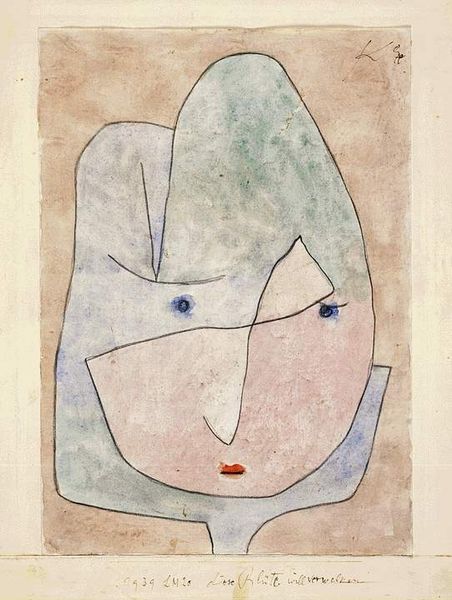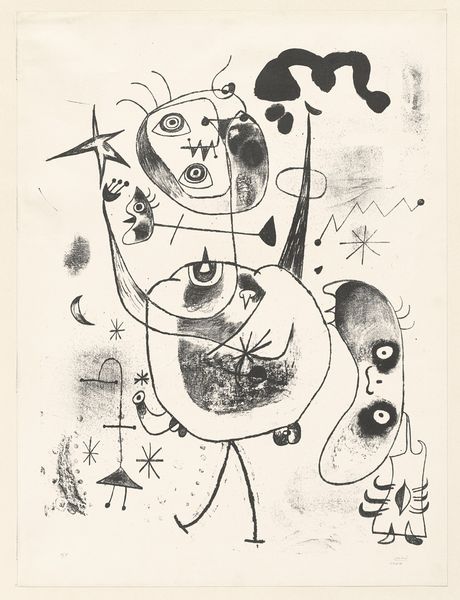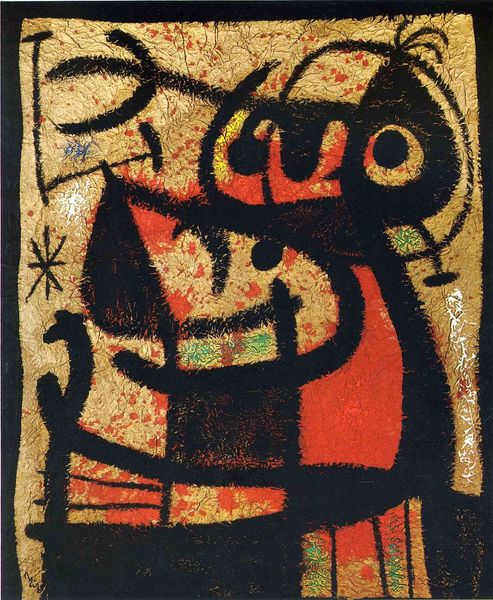
painting, acrylic-paint
#
organic
#
painting
#
acrylic-paint
#
figuration
#
abstract
#
surrealism
#
modernism
Copyright: Modern Artists: Artvee
Editor: This is Joan Miró's "Femmes et oiseaux dans la nuit" from 1946. It's an acrylic painting, and I'm really drawn to how simple the figures are, but also how evocative. What do you see when you look at this piece? Curator: Well, the very first thing I notice is the canvas itself. It appears unprimed, allowing the acrylic paint to really sink into the weave. That direct relationship between pigment and support speaks to Miró’s interest in a kind of primal mark-making. Consider also that 1946 was right after the Second World War, a period when materials were scarce. Could this bare canvas be a conscious reflection on material limitations, a kind of art born from necessity? Editor: That's fascinating. I was so focused on the figures; I didn't consider the material circumstances. The "women and birds" feel almost childlike in their simplicity, like symbols instead of portraits. Curator: Exactly. And how were these acrylic paints manufactured? What labor went into creating the pigments, the binders, the canvas itself? The seeming spontaneity is belied by the industrial processes required to create it. How do we reconcile the artist's gesture with this network of production and distribution? Is it high art or manufactured object? Editor: So you're saying that even this seemingly simple piece has complex ties to labor and industrialization. It makes me wonder about his access to these materials – was it typical for artists at the time? Curator: It is a valid point. Access would likely reflect privilege. Looking at his contemporary artists will contextualize his position as a artist of this particular period. We might not typically consider that relationship, no. But Miró, even in his dreamlike imagery, is engaging with the real world through the very substance of his art. Editor: I see what you mean! It's much more than just figures floating on a canvas; it’s a snapshot of a specific material reality. Curator: Precisely. Examining its materiality allows us to connect the artwork to its socio-economic context.
Comments
No comments
Be the first to comment and join the conversation on the ultimate creative platform.

